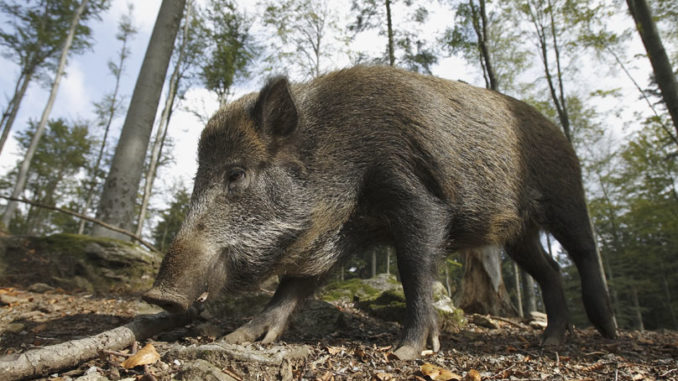
S.C. hunters killed 31,508 wild hogs during 2019
The South Carolina Dept. of Natural Resources’ 2019 Deer Hunter Survey also asked hunters to provide information on their wild hog and coyote harvesting activities. Documenting the hog harvest became customary several years ago because wild hogs are commonly taken incidental to deer hunting.
Wild or feral hogs are often thought of as “game” and there is a certain amount of sport associated with harvesting hogs. Wild hogs provide quality meat for the hunter and mature hogs can make a highly sought-after “trophy.”
Wild hogs are not native to South Carolina or any part of the North American continent. They are descendants of European domestic hogs that escaped or were released dating back as far as the early Spanish explorers. Also, closed-range or fencing requirements for livestock did not arise until the 1900’s and letting hogs “free-range” was common prior to fencing laws.
Wild hogs were historically associated with the major river flood plain systems in Coastal South Carolina. Unfortunately, recent relocations of wild hogs by hunters appear to be responsible for the species populating areas where they were not found in the past. Wild hogs directly compete with native species like deer and wild turkey for habitat and food. And hogs can do significant damage to the habitat and agricultural production through their rooting activities.
Wild hog populations are present in all 46 counties
Legislation passed during the 2005 session of the South Carolina General Assembly prohibits the release of hogs in the state and legislation passed in 2010 prohibits the removal of a live hog from the woods without a permit (SC Code Section 50-16-25). Hogs are not protected animals in South Carolina and hunters are allowed to harvest them throughout the year during daylight hours and at night by registering their property.
During 2019 an estimated 31,508 wild hogs were incidentally harvested by deer hunters in South Carolina. This marks a 20 percent decrease from 2018 (39,347 hogs). Hog numbers and thus harvest, can vary substantially from year to year due to bottomland flooding during the fall and winter farrowing season which can cause mortality in piglets (and some adults), as well as, increasing vulnerability to hunters as hogs move to higher ground.
The dramatic decrease in harvest in 2019 is likely related to these factors as bottomland flooding was relatively widespread due to tropical systems in 2018 and the resulting record hog harvest that year. Evidence of the presence of hogs in 46 of 46 counties was made by hunter harvest activities (46 of 46 counties in 2018).
Statewide, approximately 1.4 hogs/mile2 were harvested. However, this figure is deceiving because hogs only inhabit a relatively small portion of the state as a whole. The top 5 counties for wild hog harvest per unit area were Anderson (4.6 hogs/mile2), Abbeville (3.7 hogs/mile2), Allendale (3.6 hogs/mile2), Richland (3.3 hogs/mile2), and Hampton (3.1 hogs/mile2).
Click here to read about South Carolina’s 2019 deer harvest statistics.

Be the first to comment